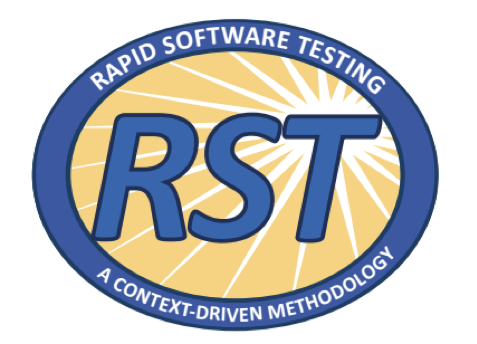 October 23 DEWT and James Bach met in Dordrecht to talk about testing. The subject was “What is context-driven testing?” and more specific “How do you recognize a context-driven presentation?”.
October 23 DEWT and James Bach met in Dordrecht to talk about testing. The subject was “What is context-driven testing?” and more specific “How do you recognize a context-driven presentation?”.
They came together to prepare for the TestNet Autumn Event which was fully dedicated to context-driven testing and had the theme: “Exploring context-driven testing – a new hype or here to stay?”.
DEWT decided earlier this year to write an article about the event to reflect on context-driven testing in the Netherlands. What does the TestNet community have to say about context-driven testing? What can we learn from the event? What can we do to help the community learn? How context-driven is the Dutch Testing community? While discussing this the DEWTs found it hard to find heuristics to “measure” (maybe “recognize” is a better word here) the presentations at the TestNet event.
What is context-driven?
Often context-driven testing is “only” seen as an approach, but it can be more. Actually there are 3 different things that are called context-driven. Testers can be part of one, without necessarily being part of the other.
- Paradigm (world view)
- Community
- Approach
For example: you can use an context-driven approach without being part of the context-driven community. To be in a paradigm you need to have a world view of testing.
| Testing | People evaluating a product by learning about it through experimentation |
| driven by | is a matter organized and motivated by a systematic consideration of |
| context | all the factors that significantly influence the problems and solutions that lie within the scope of their mission |
- Attitude: context-driven testing allows to change the approach. An example is “Huib’s Rapid Software Testing”. This Huib’s way of doing testing, inspired by Rapid Software Testing, but he changed his approach to his context. Changing anything he sees fit. Often factory school testers do not want to change their approach and apply their approach the same in every situation.
- Principles: context-driven testing is NOT (only) the seven basic principles, but there is much more. Look what lies behind them, learn about the implicit principles. See slide 9 of this presentation by James Bach.
- Mentality: context-driven testing is about skills, humanity, science, critical thinking, problem solving, non-linearity, investigation, learning, etc.
- Metrics: you can use only those metrics if you understand them and if they solve a certain problem.
- Critical thinking: do you know how? How do you know that you know? How do you get better?
“Science is the Belief in the Ignorance of Experts” — Richard Feynman
Presentations
Good stuff to look for:
- Heuristics over commandments
- Learning curves
- Compare alternative methods, trying other methods
- To be truly context-driven you have studies and tried the practices you say you do not like
- Discussion of causes and effects assuming open systems. Reject the believe that a project a well defined game that is predictable. Also reject the assumption that a process is unhackable
- Acknowledgement there are people with different opinions, not speaking from authority
- Social science
- Humanism
- Practitioner responsibility
- Craftsmanship
- Refuse to do bad work
- Problem solving
- Skill based work
Be aware of people:
- talking about ‘success’ and ‘failure’ without explaining why and describing the context
- talking about ‘structure’ and ‘chaos’ (often meaning: I am out of control)
- showing no evidence (or using sentences like: “research shows that…”)
- relying on folklore
- using numbers without context
- who are ignorant of social science
- uncritically apply the manufacture metaphor (IT is like a factory)
- apply premature automation
- assuming other people read and follow what is written
- contempt humanism
- trying stuff once and over generalize that to the whole company/world
- who fear variation
- over simplify (approach the world as if it was linear)
- misuse of statical analysis
- who use averages without variance
- who do narrow research
- say or do stuff because their clients want it
- demonize tacit knowledge and idealize explicit knowledge
This is the summary I have made of what we discussed. You could consider this as a heuristic for context-driven presentations. I used this heuristic in my presentation “What is context-driven testing?” at the TestNet event.
| Heuristics | Success / Failure |
| Learning | Chaos / Structure |
| Compare alternative methods | Lack of evidence / Narrow research |
| Cause and effect | Folklore |
| Open systems | Numbers without context |
| Social science | Ignorance of social science |
| Humanist view | Contempt of humanism |
| Craftsmanship | IT & testing is like manufacturing |
| Explain context | No context mentioned |
| Worldview of testing | Generalizing after one try |
| Different opinions | Use of averages without variance |
| Allows to change approach | Linearity |




in ‘Principle’ paragraph you write ‘See slide 9 of this presentation by James Bach.’ but that presentation has only 8 slides. Am I missing smtg?
Hi Calin, there are 8 pages and 15 slides. So slide 9 is the top slide on page 5 titled “Implicit principles of the Context-Driven School of Testing”.
Most things mentioned seem to me to have relevance to being context driven, but “Refuse to do bad work” kind of stands out.
Could you explain what you mean by this, in the context of this post?
Bad work means anything that is not of any value, bad testing, doing stuff you do not support. Like doing stuff your project manager asks you to do, which you consider bad. Think of applying best practices without looking at any context, not reporting bugs, fake testing, etc.